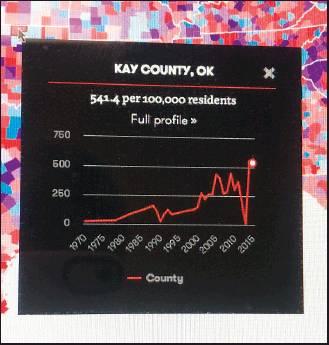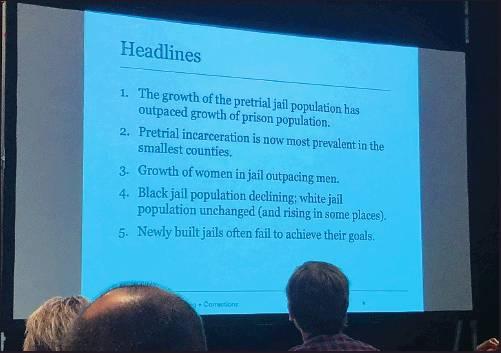Rural jails still growing in U.S.
Editor’s Note: This follows a series of articles on a recent Poynter Institute workshop I attended in Dallas called “A Journalist’s Guide to Covering Jails.” This next story is about trends in jails across the U.S.
DALLAS, Texas — Chris Mai, research associate at Vera’s Center on Sentencing and Corrections, presented nationwide jail population trends to journalists from across the U.S. at a workshop sponsored by the Poynter Institute in Dallas, Texas.
Mai said there is a difference between prisons and jails that most people don’t realize.
Prisons are for people serving a felony sentence, designed for long stays, run (and paid for) by the state and will hold people from anywhere in the states. Jails are for people awaiting trial, those with a short sentence, designed for short stays, run by the county sheriff and mainly hold people from the county.
Mai said pre-trial jail growth outpaces the prison growth in ages 15-64. She said in 1970, 66 out of 100,000 people were held for pre-trial. In 2015 that number jumped to 205 out of 100,000 people.
“Rural jails are still growing nationally,” said Mai. For example, there were 72 per 100,000 in rural jails. That number jumped to 489 per 100,000 in 2015. Women in jail has grown 14-fold while men in jail has grown 5-fold.
Approximately 8,000 women were in jail in 1970 compared to 110,000 in 2014.
Mai also said there are still large racial disparities across the United States.
According to trends.vera.org, Kay County has a rate of 541.4 per 100,000 residents. That number has increased over the last several years. Per 100,000 residents, Kay County had a rate of 149.1 in 2000, 219.6 in 2002 and 375.5 in 2011.
According to the Vera Institute, the incarceration trends in Oklahoma has increased by 332 percent. In 1983 a total of 9,270 were incarcerated. That number compares to 40,047 people in 2015. It has since dropped but the numbers vary depending on which results you look at for 2019.
Since 1970, the total jail population has increased 513 percent.
In 2015, pretrial detainees constituted 64 percent of the total jail population in Oklahoma.
Since 1983, the prison custody population has increased 276 percent. In 2018, there were 26,438 in the Oklahoma prison system. The number of women in Oklahoma’s jails has increased more than 20-fold, from 95 in 1970 to 1,905 in 2015.
The number of women in Oklahoma’s prisons has increased more than 17-fold, from 176 in 1978 to 3,114 in 2017.
Marshall County has the highest admission rate in the state with a total of 473,828 per 100,000 residents.
So how does Oklahoma compare to some of our neighboring states?



